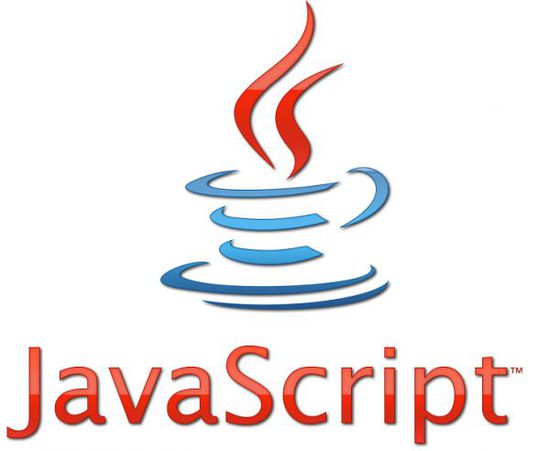10 recommended articles about loop deletion
This article mainly introduces you to several methods of deleting elements in an array in a Javascript loop. The article gives detailed sample codes for your reference and study. It has certain reference and learning value for everyone. Friends who need it can follow Let’s take a look together. This article mainly shares with you several methods of deleting elements in an array in a Javascript loop. It is shared for your reference and learning. Let’s take a look at the detailed introduction: When you find problems in the process of coding, you often encounter loops. Removes the requirement for the specified element. According to the conventional idea, just create a for loop, and then make an if judgment in the loop, and delete the specified element in the judgment. But the actual situation often does not run as smoothly as expected. The following takes a piece of Javascript code as an example to demonstrate this process. (function () { var arr = [1,2,2,3,4,5]; var len = arr.length; f
1. Introduction to the method of deleting elements in an array using JS

##Introduction: This article mainly introduces you to several methods of deleting elements in an array in a Javascript loop. The article provides detailed sample code for your reference and study. It has certain reference and learning value for everyone. It is needed Friends, let’s take a look together.
2. Sample sharing of multiple methods of looping to delete elements in an array in Javascript

Introduction: This article mainly introduces several methods of Javascript loop deletion of elements in the array. The article gives detailed sample code for your reference and study, which has certain knowledge for everyone. Refer to the learning value. Friends who need it can take a look below.
3. Detailed explanation of the method of recursively deleting elements in an array in JS

Introduction: This article mainly introduces several methods of Javascript loop deletion of elements in an array. The article provides detailed sample code for your reference and study, which will be a certain reference for everyone. Value, friends in need come and take a look below.
4. Python incremental loop to delete MySQL table data

Introduction: This article mainly introduces the relevant information on Python incremental loop deletion of MySQL table data. This article introduces it in very detail and has reference value. Friends in need can refer to it
5. Summary of methods to loop through and delete elements in list in java

Introduction : The following editor will bring you a summary of the method of cyclically deleting elements in a list in Java. The editor thinks it’s pretty good, so I’ll share it with you now and give it as a reference. Let’s follow the editor to take a look
6. For loop deletion collection trap in java

Introduction: Why can't we add or delete collections when enhancing the for loop in java? A loop iteration has nothing to do with the addition, deletion and modification of the collection. Modifying the collection is not done by for. for only loops iterations. You modify the collection in the loop, change the length of the collection, and the order has an impact on the loop.
7. About for loop deleting the contents of array elements in JavaScript Problem

Introduction: Problems that occur when deleting the contents of array elements in a for loop in JavaScript
8. Detailed explanation of how PHP deletes a directory and all files in the directory_ PHP tutorial
#Introduction: Detailed explanation of how to delete a directory and all files in the directory in PHP. Function Code 1: Delete the directory and all files in the directory. Copy the code as follows: // Loop to delete directories and files function delDirAndFile( $dirName ) { if ( $handle = opendir
9. PHP implementation code for loop deletion of infinite category sub-nodes_PHP tutorial
Introduction: PHP loop deletion implementation code for infinite category sub-nodes Copy the code as follows. : ?php private function _deleteSubNode($ids){ $subNodes = array(); $mod = D('Node'); foreach (explode ( ',', $ids ) as $k){ $res = $this- _getSubNode($k,$su
##10. php delete non-empty directory custom function_PHP tutorial
Introduction: PHP custom function to delete non-empty directories. //The function code for deleting directories and files in a loop is as follows: function delDirAndFile( $dirName ) { if ( $handle = opendir( $dirName ) ) { while ( false !== ( $item = readdir( $handle ) ) ) { if
【Related Q&A recommendations】:
Delete mysql records in batches
c++ - How to delete linked list in O(1) time?
##php - How to delete without loopThe above is the detailed content of 10 recommended articles about loop deletion. For more information, please follow other related articles on the PHP Chinese website!

Hot AI Tools

Undresser.AI Undress
AI-powered app for creating realistic nude photos

AI Clothes Remover
Online AI tool for removing clothes from photos.

Undress AI Tool
Undress images for free

Clothoff.io
AI clothes remover

Video Face Swap
Swap faces in any video effortlessly with our completely free AI face swap tool!

Hot Article

Hot Tools

Notepad++7.3.1
Easy-to-use and free code editor

SublimeText3 Chinese version
Chinese version, very easy to use

Zend Studio 13.0.1
Powerful PHP integrated development environment

Dreamweaver CS6
Visual web development tools

SublimeText3 Mac version
God-level code editing software (SublimeText3)

Hot Topics
 1663
1663
 14
14
 1419
1419
 52
52
 1313
1313
 25
25
 1264
1264
 29
29
 1237
1237
 24
24
 Demystifying JavaScript: What It Does and Why It Matters
Apr 09, 2025 am 12:07 AM
Demystifying JavaScript: What It Does and Why It Matters
Apr 09, 2025 am 12:07 AM
JavaScript is the cornerstone of modern web development, and its main functions include event-driven programming, dynamic content generation and asynchronous programming. 1) Event-driven programming allows web pages to change dynamically according to user operations. 2) Dynamic content generation allows page content to be adjusted according to conditions. 3) Asynchronous programming ensures that the user interface is not blocked. JavaScript is widely used in web interaction, single-page application and server-side development, greatly improving the flexibility of user experience and cross-platform development.
 The Evolution of JavaScript: Current Trends and Future Prospects
Apr 10, 2025 am 09:33 AM
The Evolution of JavaScript: Current Trends and Future Prospects
Apr 10, 2025 am 09:33 AM
The latest trends in JavaScript include the rise of TypeScript, the popularity of modern frameworks and libraries, and the application of WebAssembly. Future prospects cover more powerful type systems, the development of server-side JavaScript, the expansion of artificial intelligence and machine learning, and the potential of IoT and edge computing.
 JavaScript Engines: Comparing Implementations
Apr 13, 2025 am 12:05 AM
JavaScript Engines: Comparing Implementations
Apr 13, 2025 am 12:05 AM
Different JavaScript engines have different effects when parsing and executing JavaScript code, because the implementation principles and optimization strategies of each engine differ. 1. Lexical analysis: convert source code into lexical unit. 2. Grammar analysis: Generate an abstract syntax tree. 3. Optimization and compilation: Generate machine code through the JIT compiler. 4. Execute: Run the machine code. V8 engine optimizes through instant compilation and hidden class, SpiderMonkey uses a type inference system, resulting in different performance performance on the same code.
 JavaScript: Exploring the Versatility of a Web Language
Apr 11, 2025 am 12:01 AM
JavaScript: Exploring the Versatility of a Web Language
Apr 11, 2025 am 12:01 AM
JavaScript is the core language of modern web development and is widely used for its diversity and flexibility. 1) Front-end development: build dynamic web pages and single-page applications through DOM operations and modern frameworks (such as React, Vue.js, Angular). 2) Server-side development: Node.js uses a non-blocking I/O model to handle high concurrency and real-time applications. 3) Mobile and desktop application development: cross-platform development is realized through ReactNative and Electron to improve development efficiency.
 Python vs. JavaScript: The Learning Curve and Ease of Use
Apr 16, 2025 am 12:12 AM
Python vs. JavaScript: The Learning Curve and Ease of Use
Apr 16, 2025 am 12:12 AM
Python is more suitable for beginners, with a smooth learning curve and concise syntax; JavaScript is suitable for front-end development, with a steep learning curve and flexible syntax. 1. Python syntax is intuitive and suitable for data science and back-end development. 2. JavaScript is flexible and widely used in front-end and server-side programming.
 How to Build a Multi-Tenant SaaS Application with Next.js (Frontend Integration)
Apr 11, 2025 am 08:22 AM
How to Build a Multi-Tenant SaaS Application with Next.js (Frontend Integration)
Apr 11, 2025 am 08:22 AM
This article demonstrates frontend integration with a backend secured by Permit, building a functional EdTech SaaS application using Next.js. The frontend fetches user permissions to control UI visibility and ensures API requests adhere to role-base
 From C/C to JavaScript: How It All Works
Apr 14, 2025 am 12:05 AM
From C/C to JavaScript: How It All Works
Apr 14, 2025 am 12:05 AM
The shift from C/C to JavaScript requires adapting to dynamic typing, garbage collection and asynchronous programming. 1) C/C is a statically typed language that requires manual memory management, while JavaScript is dynamically typed and garbage collection is automatically processed. 2) C/C needs to be compiled into machine code, while JavaScript is an interpreted language. 3) JavaScript introduces concepts such as closures, prototype chains and Promise, which enhances flexibility and asynchronous programming capabilities.
 Building a Multi-Tenant SaaS Application with Next.js (Backend Integration)
Apr 11, 2025 am 08:23 AM
Building a Multi-Tenant SaaS Application with Next.js (Backend Integration)
Apr 11, 2025 am 08:23 AM
I built a functional multi-tenant SaaS application (an EdTech app) with your everyday tech tool and you can do the same. First, what’s a multi-tenant SaaS application? Multi-tenant SaaS applications let you serve multiple customers from a sing




